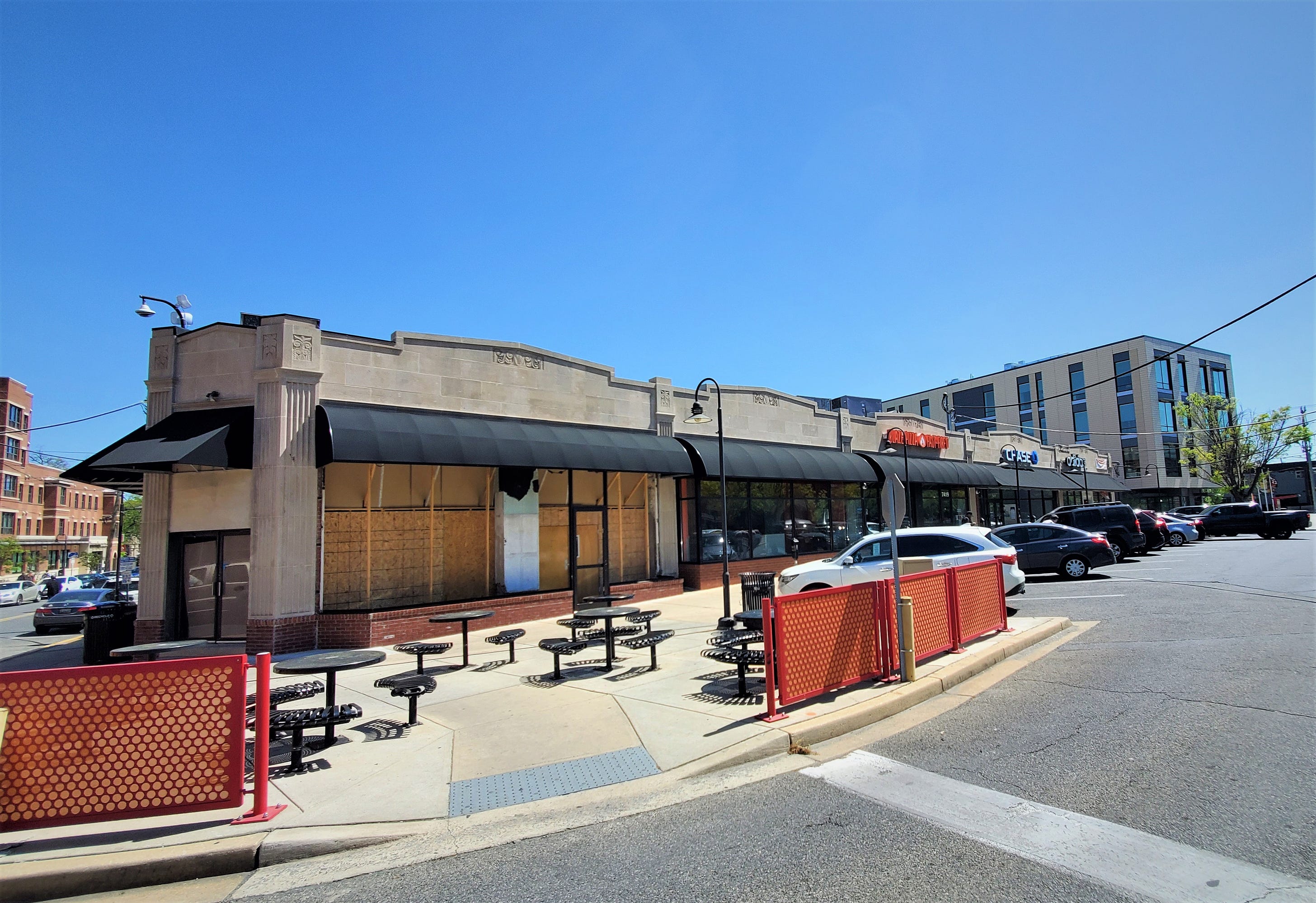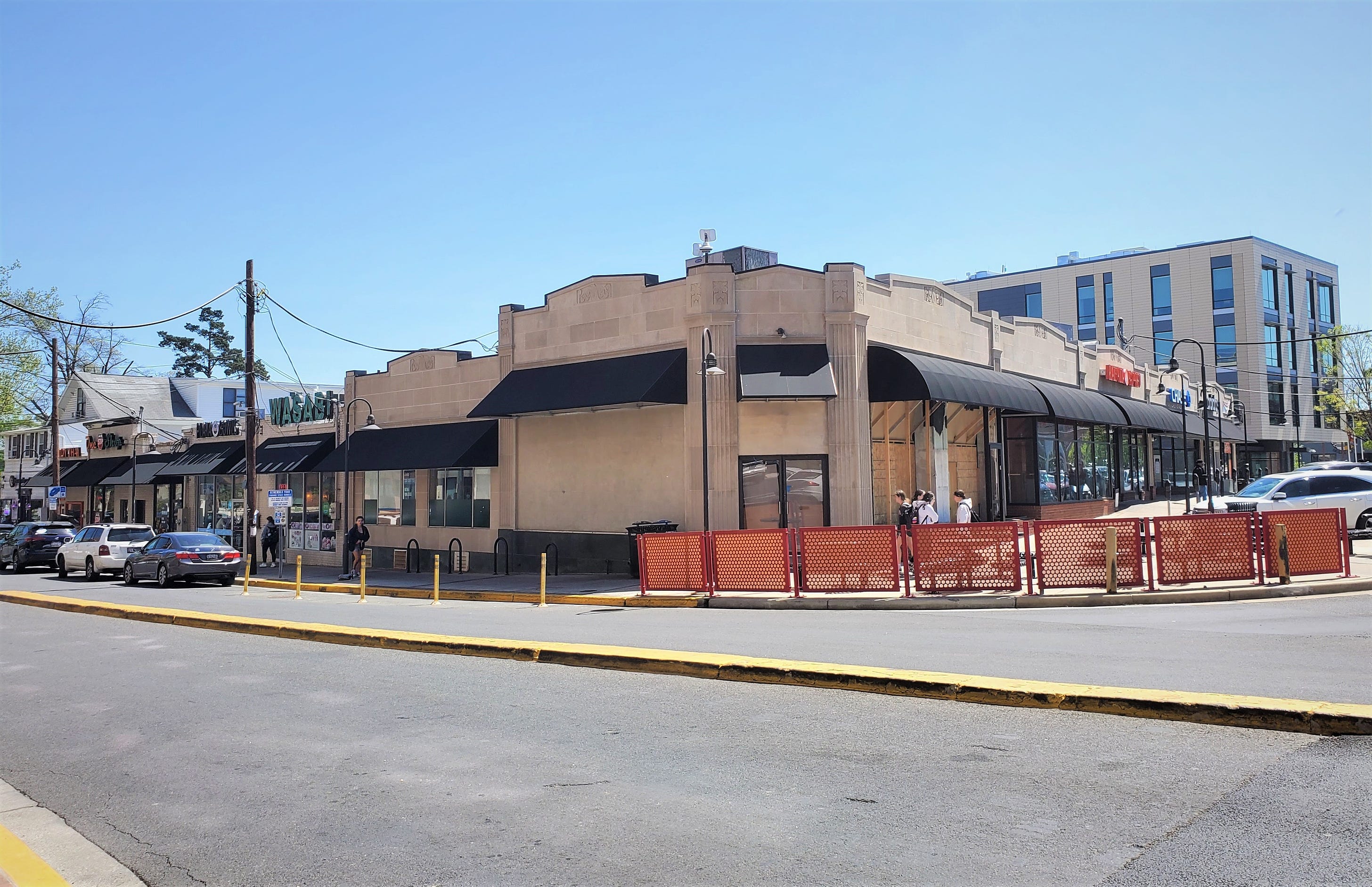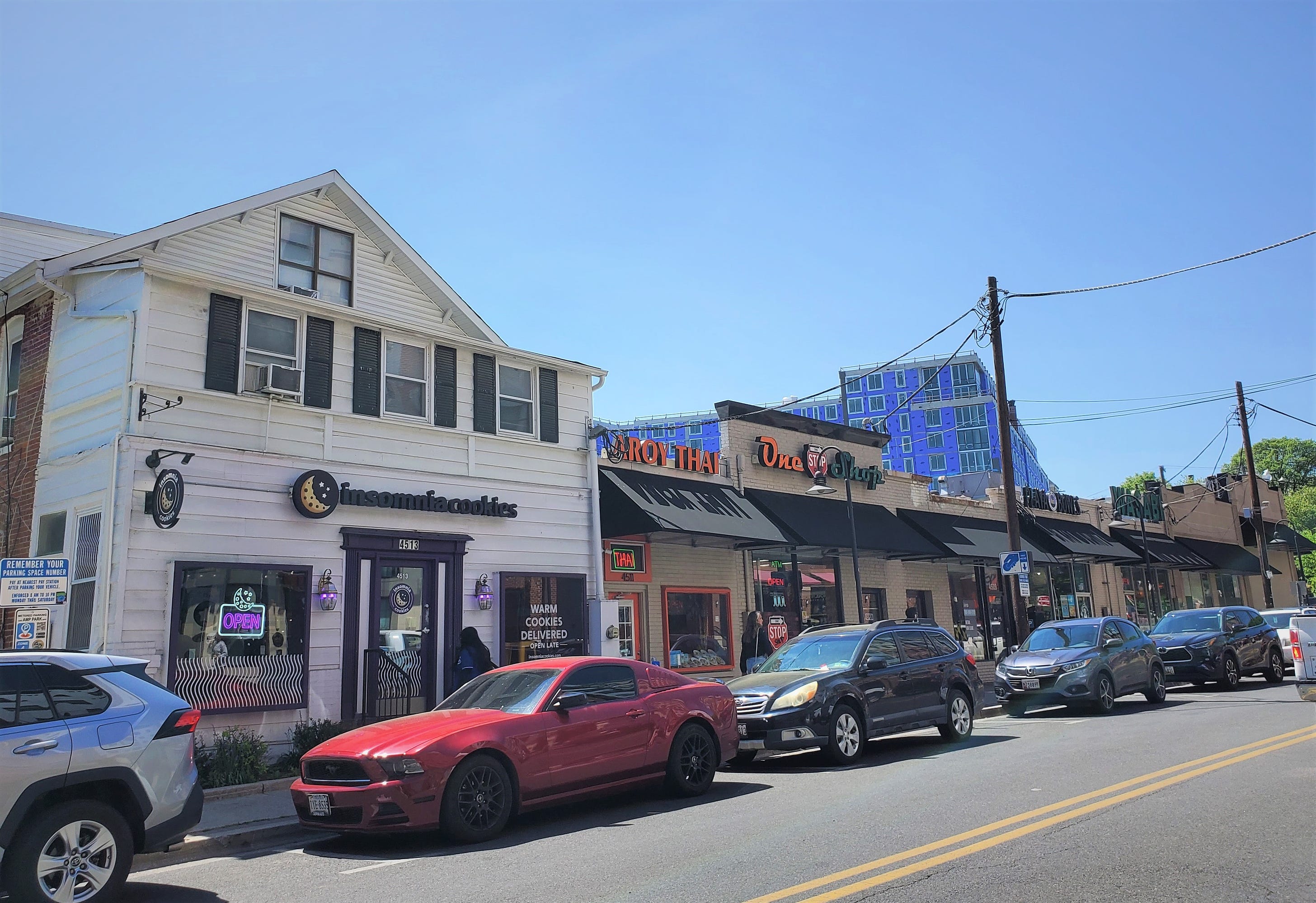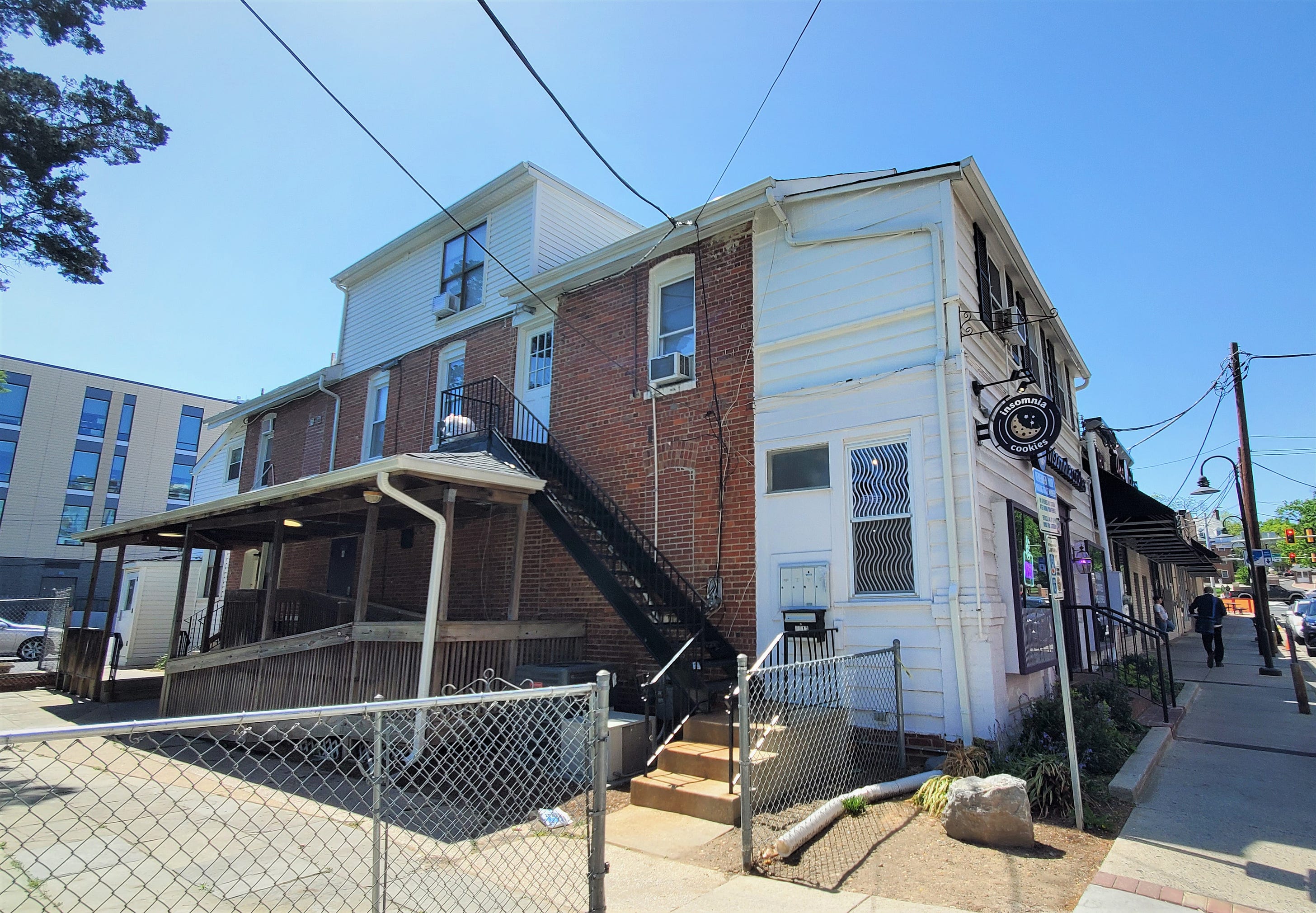The Deleted Scenes - Quasi-Urban Block
There’s a building in downtown College Park, Maryland—on Main Street/U.S. 1/Baltimore Avenue—that’s featured in Chester H. Liebs’s great roadside architecture book Main Street to Miracle Mile. Liebs offers it as an example of a “taxpayer strip.” These are/were sort of “missing links” between genuine urban blocks and modern strip plazas. Taxpayer strips were typical of streetcar corridors, though a streetcar never ran along Route 1 (it ran in the area elsewhere.) The name refers to the fact that these cheap, simple buildings were constructed to help cover property taxes while land was held. They were intended basically as placeholders to take some of the risk out of land speculation. The idea was that once land values rose enough to build larger, sturdier, proper buildings, that would be done. But so much land was built out in this low-rise, quasi-urban pattern that most of it never did rise to a point where it could support grand urbanism. (Later, of course, zoning would prohibit that in most places regardless of land values.) This is really fascinating. It suggests that the strip mall is essentially an accident: the first increment of traditional urban growth frozen in time by low land values, and later turned into a purposeful pattern. This is something I’ll probably be coming back to. But here’s that building in College Park. It’s from 1918: over a century old! It sort of is a strip mall. But it retains quintessentially urban features: small parking lot, which looks like street parking; adorned façade resembling an urban building; a corner storefront, replicating the look and feel of an urban block. But it’s not a strip mall. Here’s the view from the corner: there’s another strip of stores on the side, forming an L—plus a house at the very end of that strip (in the left of the frame)! The house and part of the side strip are also identified as having been built in 1918; for some reason, a couple of the storefronts in between have build dates in the 1930s. These could be recordkeeping errors; or the two 1918 portions might not be the same building; or the whole thing might have been 1918, with a couple of portions destroyed and rebuilt in the 1930s. Here’s the house structure up close: And even closer up! It’s not a house, is it? It’s an old multifamily building, with the commercial storefront possibly added later. The whole thing is a single lot, based on the tax/property lookup (it may not always have been); here’s an (outdated) property page from the company that owns it. Regardless of whether this began life as one single structure or project, it is all attached and inhabits one small downtown block. And in every way, it is the opposite of how we build—and think about building—today. This underscores, I think, a point I’ve made before: that despite the momentous changes in urban land use over the centuries—through the rail era, or the explosion of the streetcar, or even the early advent of the automobile—there was still a fundamental continuity there. It was not until later—as early as the 1930s, as late as the 1950s or 1960s—that we actually broke that continuity sharply. When you take a big-picture view, I believe, urban settlements were a single, identifiable thing pretty much everywhere, right up until that mid-20th century break. And when this block of College Park went up, though revolution was rumbling, that break had not yet occurred. This kinda-sorta-residential/commercial/urban-strip-mall building is an architectural archaeopteryx to the “dinosaur” of classical urbanism. But it is not yet the “bird” of modern suburban development. It’s a relic of a very interesting moment in American land-use history. Related Reading: A Hint of America’s Lost Urban History Thank you for reading! Please consider upgrading to a paid subscription to help support this newsletter. You’ll get a weekly subscribers-only post, plus full access to the archive: over 600 posts and growing. And you’ll help ensure more material like this! You're currently a free subscriber to The Deleted Scenes. For the full experience, upgrade your subscription. |
Older messages
Prices Aren't Metaphysics
Friday, May 12, 2023
Market signals, not revelations
Beyond Bed Bath & Beyond, To What?
Tuesday, May 9, 2023
We'll miss the category killer when it's gone
If You Love Something, Let It Grow
Monday, May 8, 2023
NIMBYism is a denial of the natural order of the built environment
Multigenerational Suburbia
Saturday, May 6, 2023
When most Americans have never lived in a city
New and Old #108
Friday, May 5, 2023
Friday roundup and commentary
You Might Also Like
*This* Is How To Wear Skinny Jeans Like A Fashion Girl In 2025
Wednesday, March 12, 2025
The revival is here. The Zoe Report Daily The Zoe Report 3.11.2025 This Is How To Wear Skinny Jeans Like A Fashion Girl In 2025 (Style) This Is How To Wear Skinny Jeans Like A Fashion Girl In 2025 The
The Best Thing: March 11, 2025
Tuesday, March 11, 2025
The Best Thing is our weekly discussion thread where we share the one thing that we read, listened to, watched, did, or otherwise enjoyed recent… ͏ ͏ ͏ ͏ ͏ ͏ ͏ ͏ ͏ ͏ ͏ ͏ ͏ ͏ ͏ ͏ ͏ ͏ ͏ ͏ ͏ ͏ ͏ ͏ ͏ ͏ ͏ ͏
The Most Groundbreaking Beauty Products Of 2025 Are...
Tuesday, March 11, 2025
Brands are prioritizing innovation more than ever. The Zoe Report Beauty The Zoe Report 3.11.2025 (Beauty) The 2025 TZR Beauty Groundbreakers Awards (Your New Holy Grail Or Two) The 2025 TZR Beauty
Change Up #Legday With One of These Squat Variations
Tuesday, March 11, 2025
View in Browser Men's Health SHOP MVP EXCLUSIVES SUBSCRIBE Change Up #Legday With One of These Squat Variations Change Up #Legday With One of These Squat Variations The lower body staple is one of
Kylie Jenner Wore The Spiciest Plunging Crop Top While Kissing Timothée Chalamet
Tuesday, March 11, 2025
Plus, Amanda Seyfried opens up about her busy year, your daily horoscope, and more. Mar. 11, 2025 Bustle Daily Amanda Seyfried at the Tory Burch Fall RTW 2025 fashion show as part of New York Fashion
Paris Fashion Week Is Getting Interesting Again
Tuesday, March 11, 2025
Today in style, self, culture, and power. The Cut March 11, 2025 PARIS FASHION WEEK Fashion Is Getting Interesting Again Designs at Paris Fashion Week once again reflect the times with new aesthetics,
Your dinner table deserves to be lazier
Tuesday, March 11, 2025
NY delis are serving 'Bird Flu Bailout' sandwiches.
Sophie Thatcher Lets In The Light
Tuesday, March 11, 2025
Plus: Chet Hanks reaches new heights on Netflix's 'Running Point.' • Mar. 11, 2025 Up Next Your complete guide to industry-shaping entertainment news, exclusive interviews with A-list
Mastering Circumstance
Tuesday, March 11, 2025
“If a man does not master his circumstances then he is bound to be mastered by them.” ͏ ͏ ͏ ͏ ͏ ͏ ͏ ͏ ͏ ͏ ͏ ͏ ͏ ͏ ͏ ͏ ͏ ͏ ͏ ͏ ͏ ͏ ͏ ͏ ͏ ͏ ͏ ͏ ͏ ͏ ͏ ͏ ͏ ͏ ͏ ͏ ͏ ͏ ͏ ͏ ͏ ͏ ͏ ͏ ͏ ͏ ͏ ͏ ͏ ͏ ͏ ͏ ͏ ͏ ͏ ͏ ͏ ͏
Don't Fall for This Parking Fee Scam Text 🚨
Tuesday, March 11, 2025
How I Use the 'One in, One Out' Method for My Finances. You're not facing any fines. Not displaying correctly? View this newsletter online. TODAY'S FEATURED STORY Don't Fall for the



